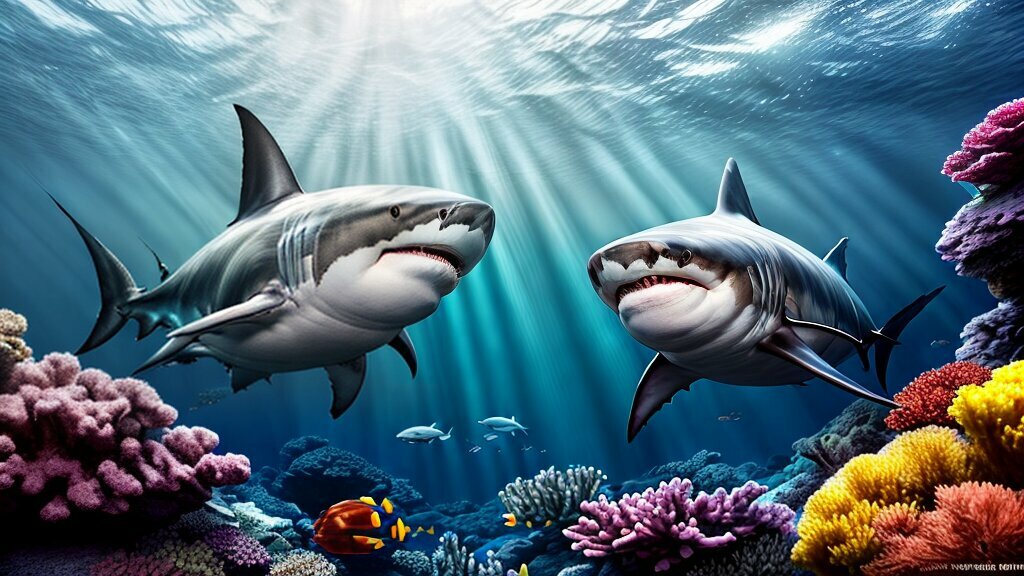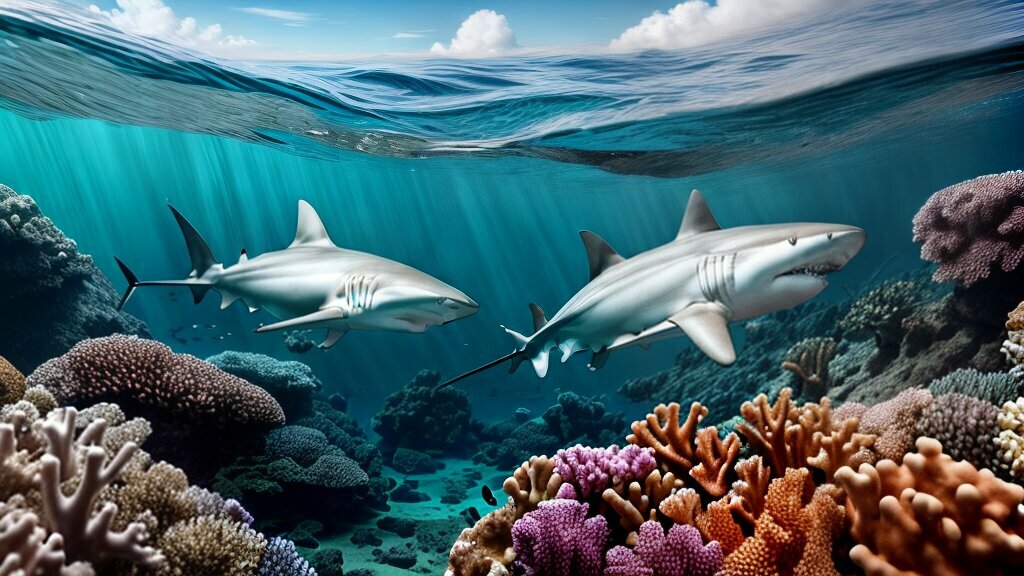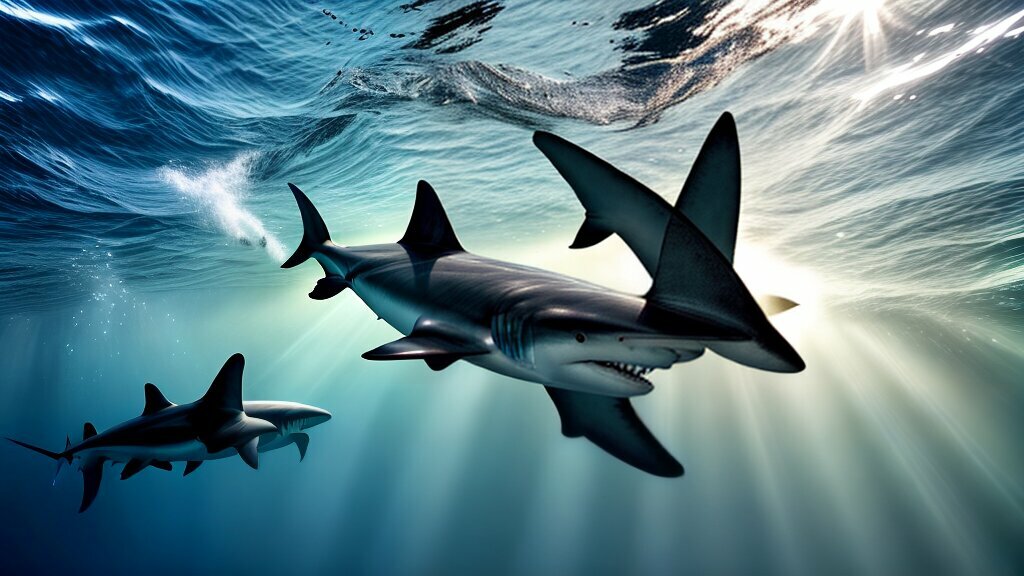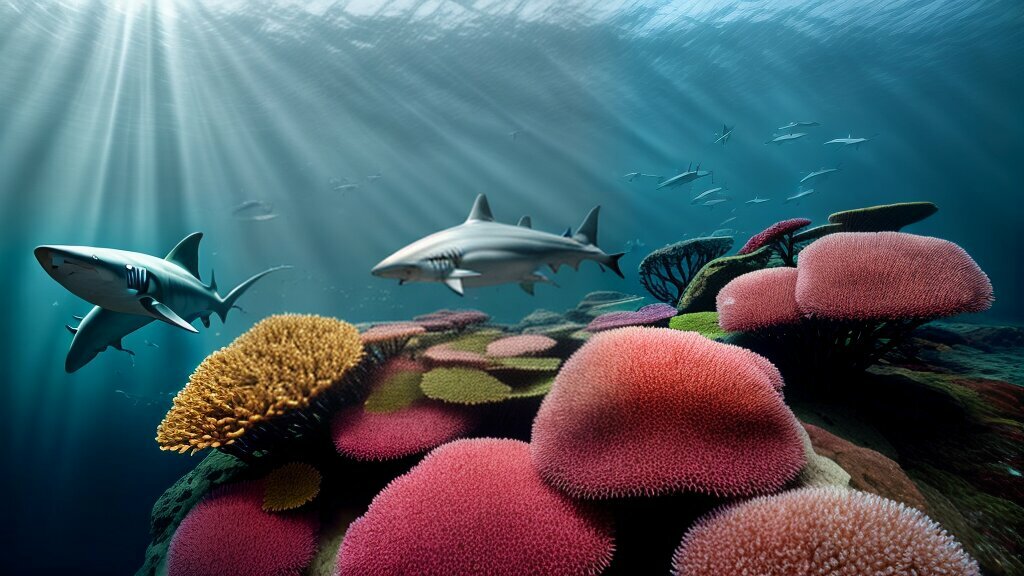Sharks are a fascinating and often misunderstood animal. The Pacific Ocean is the largest and deepest ocean on Earth, covering over a third of the planet’s surface. It is home to a vast array of marine life, including many species of sharks. So, are there sharks in the Pacific Ocean? The answer is a resounding yes! Let’s explore the facts and learn more about these incredible creatures.
- Key Takeaways:
- Types of Sharks in Pacific Ocean
- Shark Habitats in Pacific Ocean
- Popular Shark Sightings in Pacific Ocean
- Pacific Ocean Shark Facts
- Marine Life in Pacific Ocean
- Conclusion
- Explore More
- FAQ
- Q: Are there sharks in the Pacific Ocean?
- Q: What types of sharks are found in the Pacific Ocean?
- Q: Where can sharks be found in the Pacific Ocean?
- Q: Are there any notable shark sightings in the Pacific Ocean?
- Q: Can you share some interesting shark facts about the Pacific Ocean?
- Q: How do sharks contribute to the marine ecosystem in the Pacific Ocean?
Key Takeaways:
- There are many species of sharks in the Pacific Ocean.
- Sharks can be found in a variety of habitats in the Pacific, from coastal areas to open ocean.
Types of Sharks in Pacific Ocean
The Pacific Ocean is home to a wide variety of shark species, each with its own unique characteristics and habitats. Here are some of the most popular types of sharks found in the Pacific:
| Shark Species | Characteristics | Distribution in Pacific |
|---|---|---|
| Great White Shark | Large, powerful predator with serrated teeth and keen sense of smell. | Found throughout the Pacific, with hotspots off the coast of California, Mexico, and Australia. |
| Tiger Shark | Aggressive predator with stripes on its skin and a varied diet. | Found in warmer waters throughout the Pacific, with hotspots in Hawaii and the South Pacific Islands. |
| Hammerhead Shark | Distinctive shark with a flattened head and eyes on either side. | Found in tropical waters throughout the Pacific, with hotspots off the coast of Ecuador, Costa Rica, and Hawaii. |
Other popular shark species in the Pacific include the Blue Shark, Mako Shark, and Whale Shark. Each species plays an important role in the marine ecosystem, from controlling the population of other fish to maintaining the balance of the food chain.
It’s important to note that while many species of sharks can be found in the Pacific, their populations are threatened by human activity such as overfishing and pollution. It’s important to continue to research and protect these magnificent creatures for the health of the ocean and our planet.
Shark Habitats in Pacific Ocean
Sharks are highly adaptable creatures that can be found in a variety of habitats in the Pacific Ocean. From warm tropical waters to cold, deep ocean environments, sharks have been known to thrive in almost any ecosystem.
| Coastal Areas | Open Ocean | Geographic Locations |
|---|---|---|
 |
 |
 |
| Coastal areas are home to many shark species, including the great white, tiger, and hammerhead sharks. These sharks are often found swimming close to shore where they prey on fish, seals, and other marine mammals. | The open ocean is the largest habitat for sharks in the Pacific Ocean. Species such as the blue and mako sharks can travel thousands of miles through open ocean waters in search of food. These species are often found in the warm waters of the tropics and subtropics. | Specific geographic locations, such as the Hawaiian Islands and the Great Barrier Reef, are known for their diverse shark populations. These locations offer a unique combination of temperature, food sources, and shelter that allow sharks to thrive. |
In addition to these habitats, sharks can also be found in deep-sea environments, where they have been known to live at depths of over 6,000 feet.
It’s important to note that while sharks may be found in many different habitats, they still face many threats to their survival, including overfishing, bycatch, and habitat destruction. By educating ourselves about shark habitats and behavior, we can work towards protecting these important predators and preserving the health of our oceans.
Popular Shark Sightings in Pacific Ocean
Sharks have been known to frequent certain locations in the Pacific Ocean. One of the most prominent of these locations is the coast of California. Here, several species of shark can be observed in their natural habitat. The most commonly seen species include the great white shark, the tiger shark, and the blue shark.
In addition to California, Hawaii is another popular location for shark sightings. Many species of shark can be found in Hawaiian waters, including hammerhead sharks, reef sharks, and whale sharks.
One location that has gained attention recently for shark sightings is the shores of Cape Cod, Massachusetts. Great white sharks have been spotted hunting for seals in this area, leading to concerns for the safety of beachgoers.
“It was like a scene out of Jaws,” said one witness to a recent shark sighting in Cape Cod.
Despite these popular sightings, it is important to remember to always exercise caution when in the water. Sharks are wild animals and should be treated with respect. Avoid swimming in areas where sharks have been known to frequent and always follow local beach safety guidelines.
Pacific Ocean Shark Facts
Sharks are fascinating and often misunderstood predators that play a vital role in the Pacific Ocean ecosystem. Here are some interesting facts about sharks in the Pacific:
- The North Pacific is home to over 40 species of sharks, including the great white, tiger, and hammerhead sharks.
- The South Pacific has over 70 species of sharks, including the whale shark, mako, and blacktip sharks.
- Sharks have been around for more than 400 million years, making them one of the oldest living species on earth.
- Sharks can range in size from the tiny dwarf lantern shark, which is only 20 centimeters long, to the giant whale shark, which can grow up to 12 meters in length.
- Contrary to popular belief, not all sharks must keep swimming to breathe. Some species are able to pump water over their gills while stationary.
- Sharks have a remarkable sense of smell that allows them to detect even the smallest amount of blood in the water from miles away.
Despite their fearsome reputation, sharks are not as dangerous to humans as many believe. In fact, humans pose a much greater threat to sharks than sharks do to humans. By understanding and respecting these magnificent creatures, we can work towards protecting them and preserving the delicate balance of the Pacific Ocean ecosystem.
Marine Life in Pacific Ocean
The Pacific Ocean is home to an incredibly diverse range of species, including many types of sharks. Sharks are an integral part of the Pacific Ocean ecosystem, playing important roles in regulating the food chain and maintaining ecological balance.
It’s estimated that there are over 300 shark species in the Pacific Ocean. Some of the most commonly found species include the great white shark, tiger shark, hammerhead shark, and the whale shark. These sharks can be found in a variety of habitats throughout the Pacific.
| Shark Species | Habitat |
|---|---|
| Great White Shark | Coastal, Open Ocean |
| Tiger Shark | Coastal, Open Ocean |
| Hammerhead Shark | Coastal, Open Ocean |
| Whale Shark | Coastal, Open Ocean |
Sharks are apex predators in their habitats and help to control the populations of other marine animals. They also help to maintain healthy and diverse populations of fish and other marine life. Research has shown that in areas where sharks are removed, there is a significant reduction in biodiversity and overall health of the ecosystem.
Despite their importance, many shark species in the Pacific Ocean are facing threats from human activities such as overfishing, bycatch, and climate change. It’s important to raise awareness about the vital role that sharks play in the marine ecosystem and take steps to protect them from these threats.
Image source:
Conclusion
In conclusion, the answer to the question “Are there sharks in the Pacific Ocean?” is a resounding yes. The Pacific Ocean is home to a diverse range of shark species, each with their own unique characteristics and habitats. From the great white shark to the hammerhead shark, there are many different types of sharks that can be found in the Pacific.
It is important to appreciate the role that sharks play in the marine ecosystem. As top predators, they help to maintain a balanced ecosystem by regulating the populations of other marine organisms. It is crucial to take measures to protect these incredible creatures and their habitats to ensure a sustainable future for our oceans.
Explore More
Interested in learning more about sharks and the Pacific Ocean? Check out our other articles on marine life conservation and ocean exploration. Remember, the more we know about our oceans, the better equipped we are to protect them.
FAQ
Q: Are there sharks in the Pacific Ocean?
A: Yes, there are sharks in the Pacific Ocean. The Pacific Ocean is home to a diverse range of shark species.
Q: What types of sharks are found in the Pacific Ocean?
A: The Pacific Ocean is home to various shark species, including the great white shark, tiger shark, hammerhead shark, and many others.
Q: Where can sharks be found in the Pacific Ocean?
A: Sharks can be found in different habitats within the Pacific Ocean, including coastal areas, open ocean, and specific geographic locations.
Q: Are there any notable shark sightings in the Pacific Ocean?
A: Yes, there have been many popular shark sightings in the Pacific Ocean, with specific locations known for frequent shark encounters.
Q: Can you share some interesting shark facts about the Pacific Ocean?
A: Certainly! Sharks in the Pacific Ocean exhibit various behaviors, feeding habits, and migration patterns. Additionally, there are differences between shark populations in the North Pacific and South Pacific.
Q: How do sharks contribute to the marine ecosystem in the Pacific Ocean?
A: Sharks play a crucial role in maintaining the balance of the marine ecosystem in the Pacific Ocean. They are part of a complex food chain and help regulate populations of other marine organisms.













